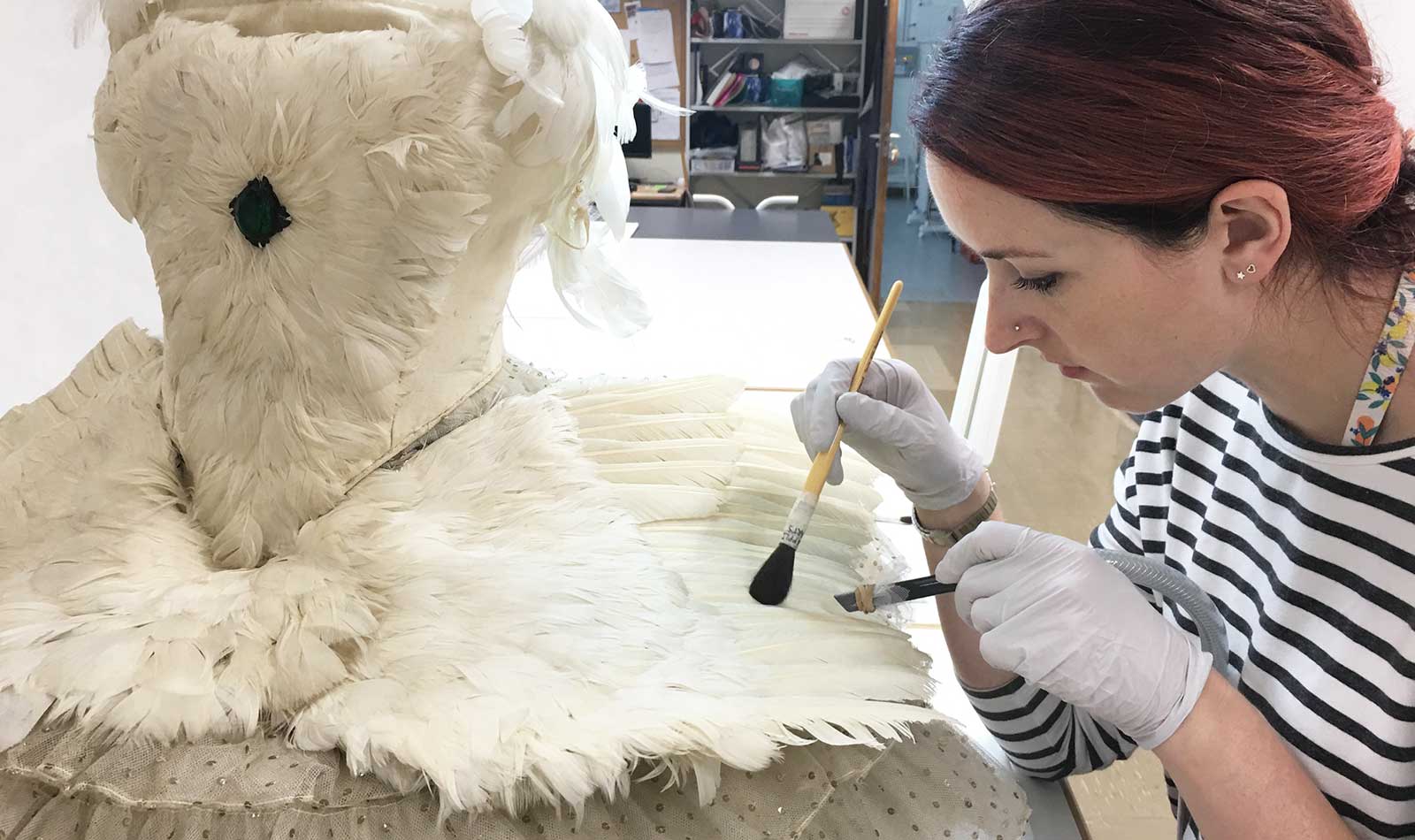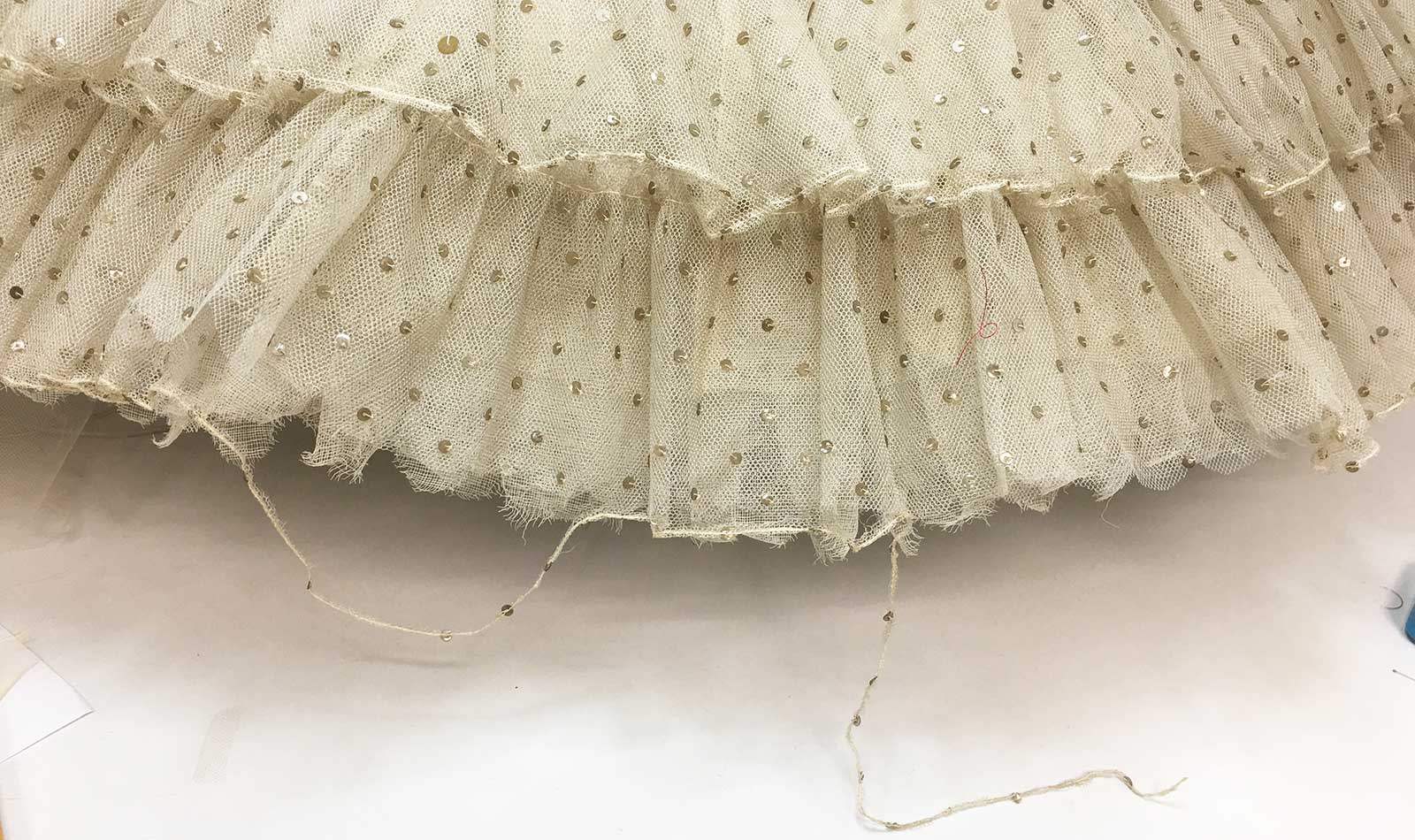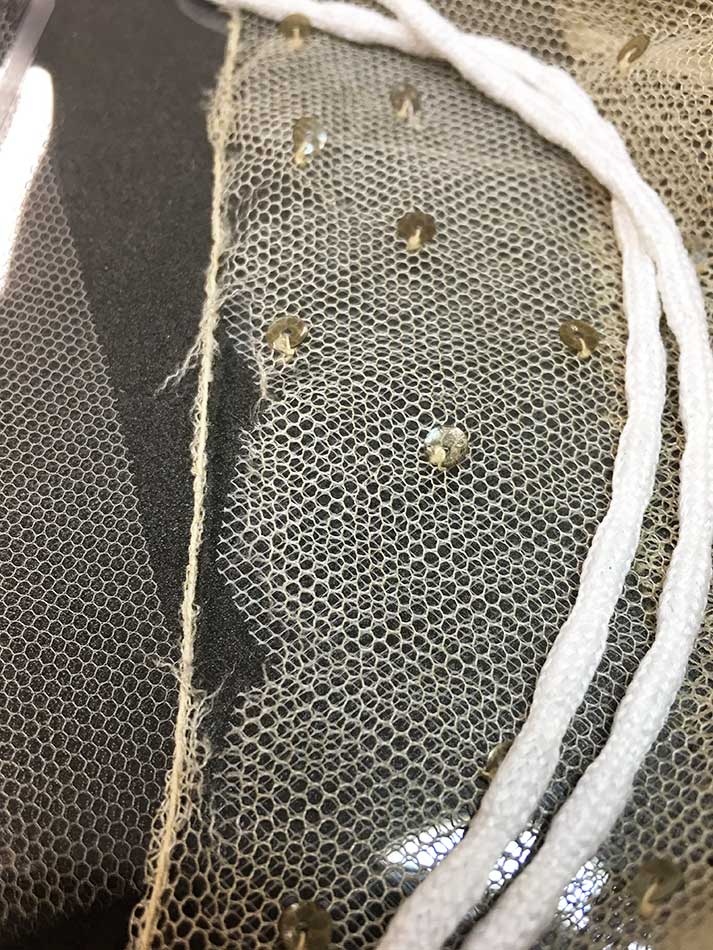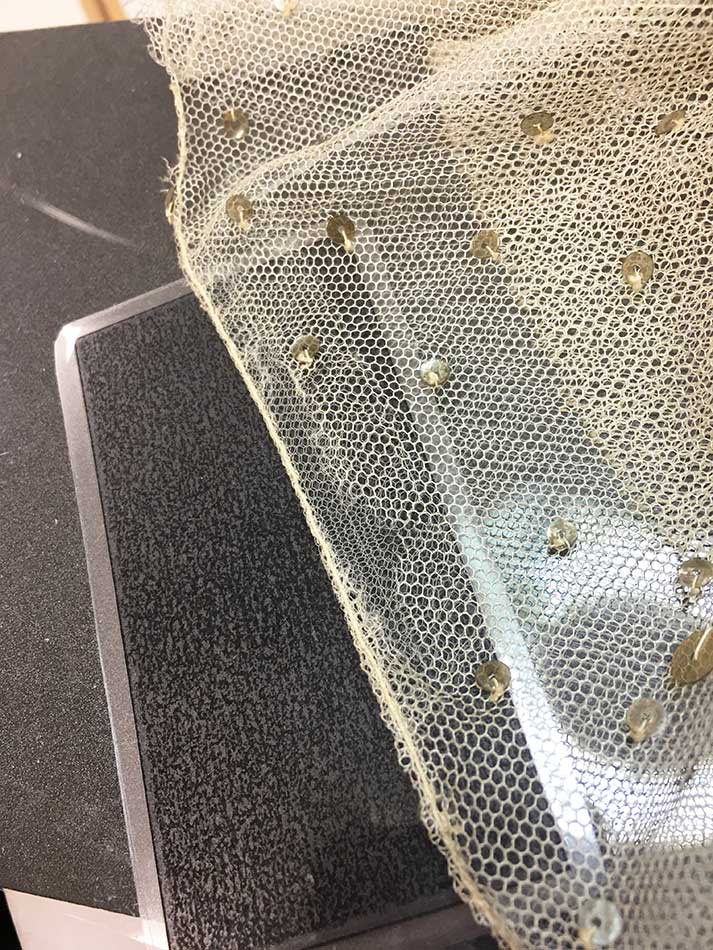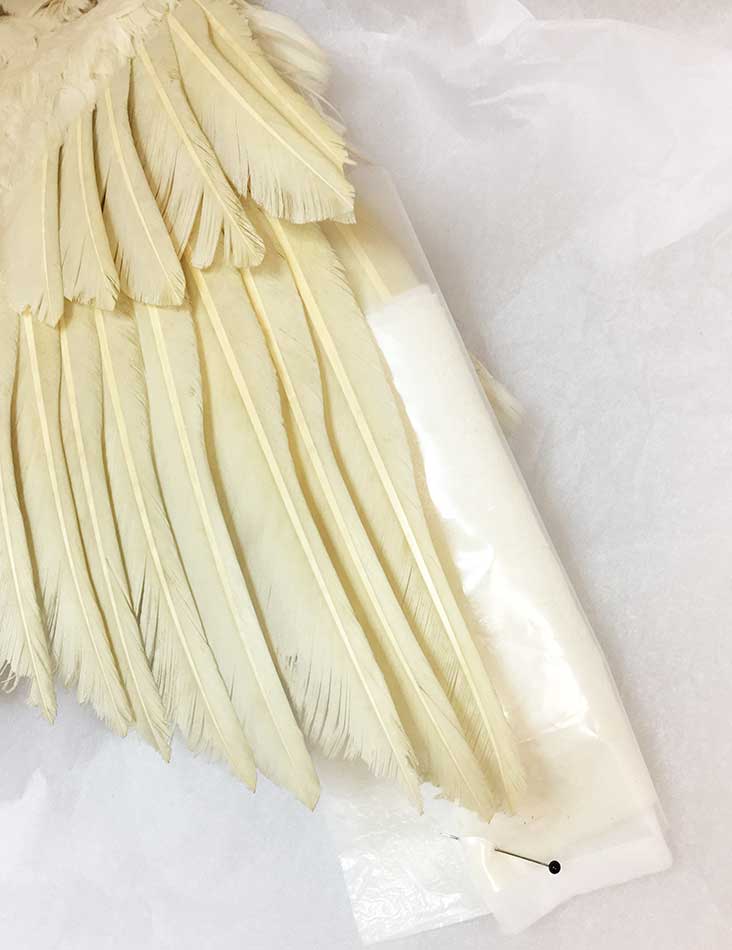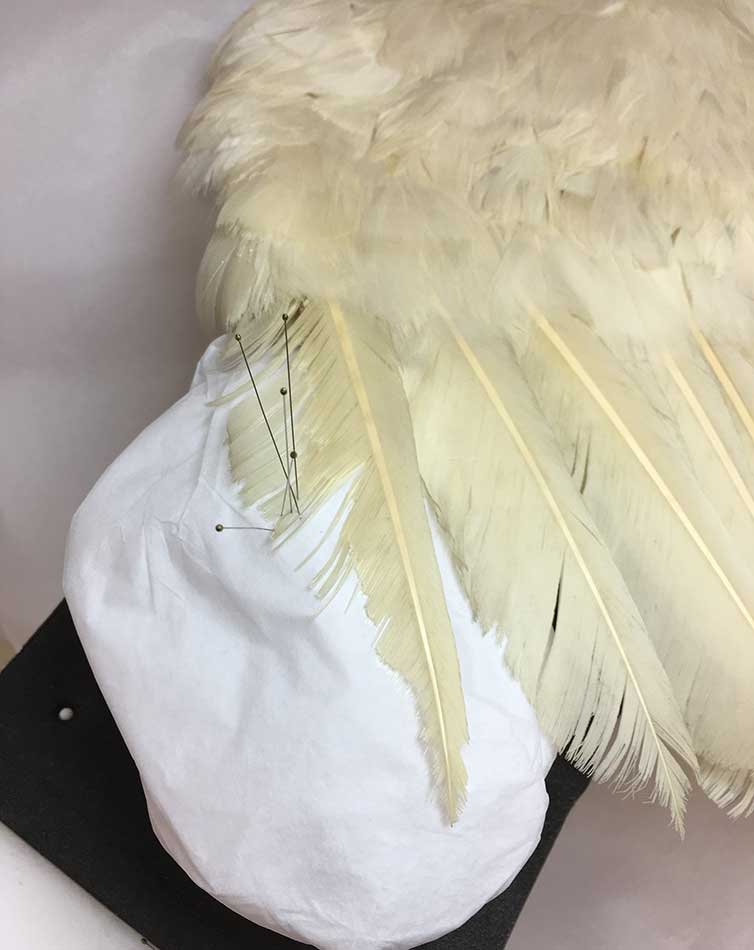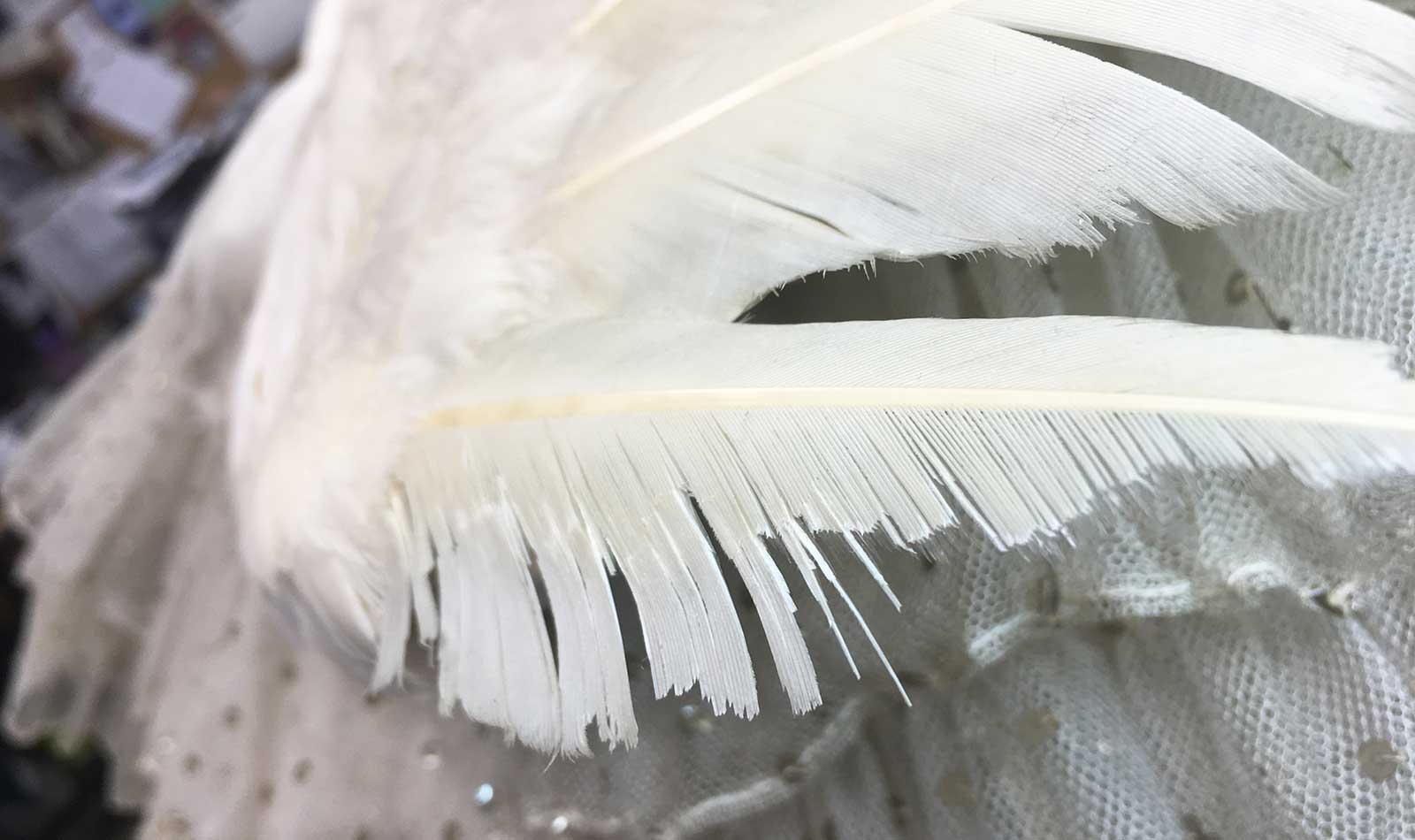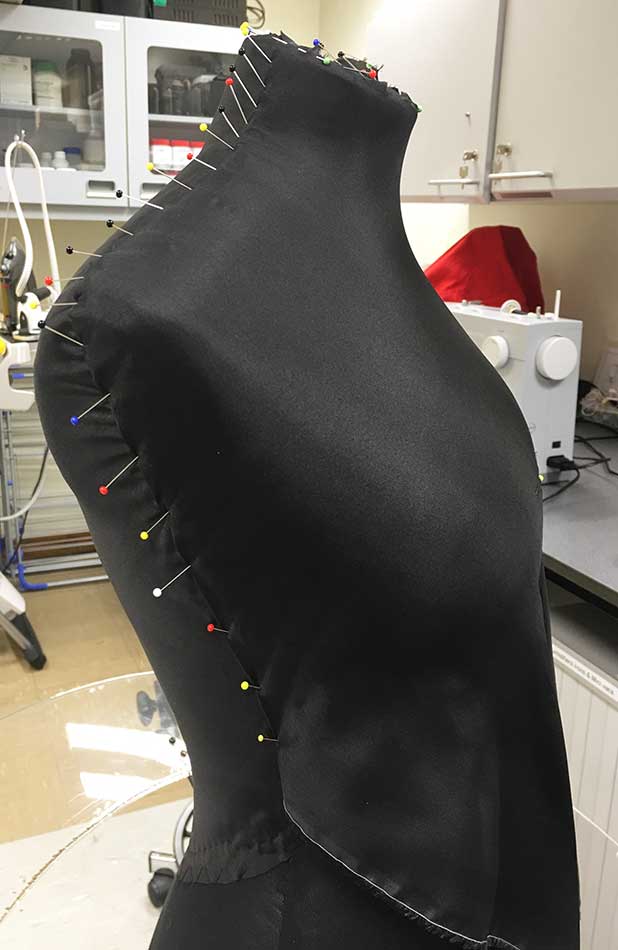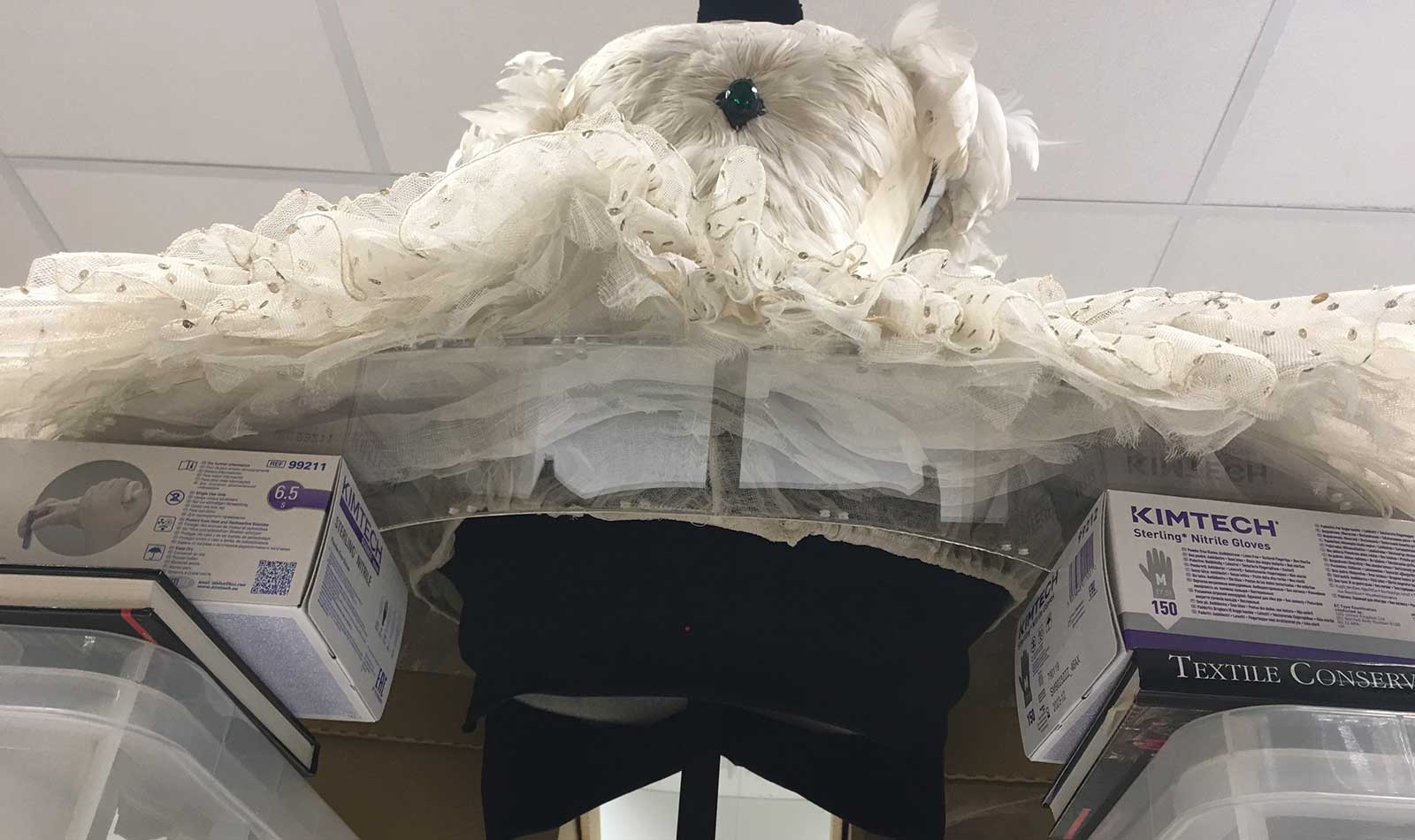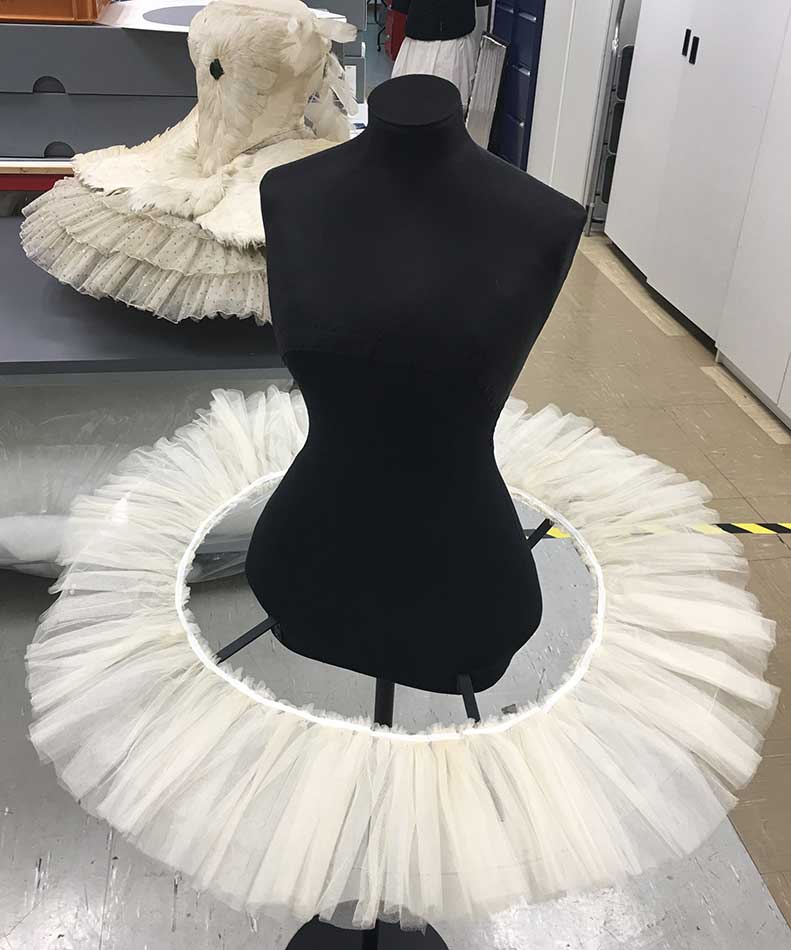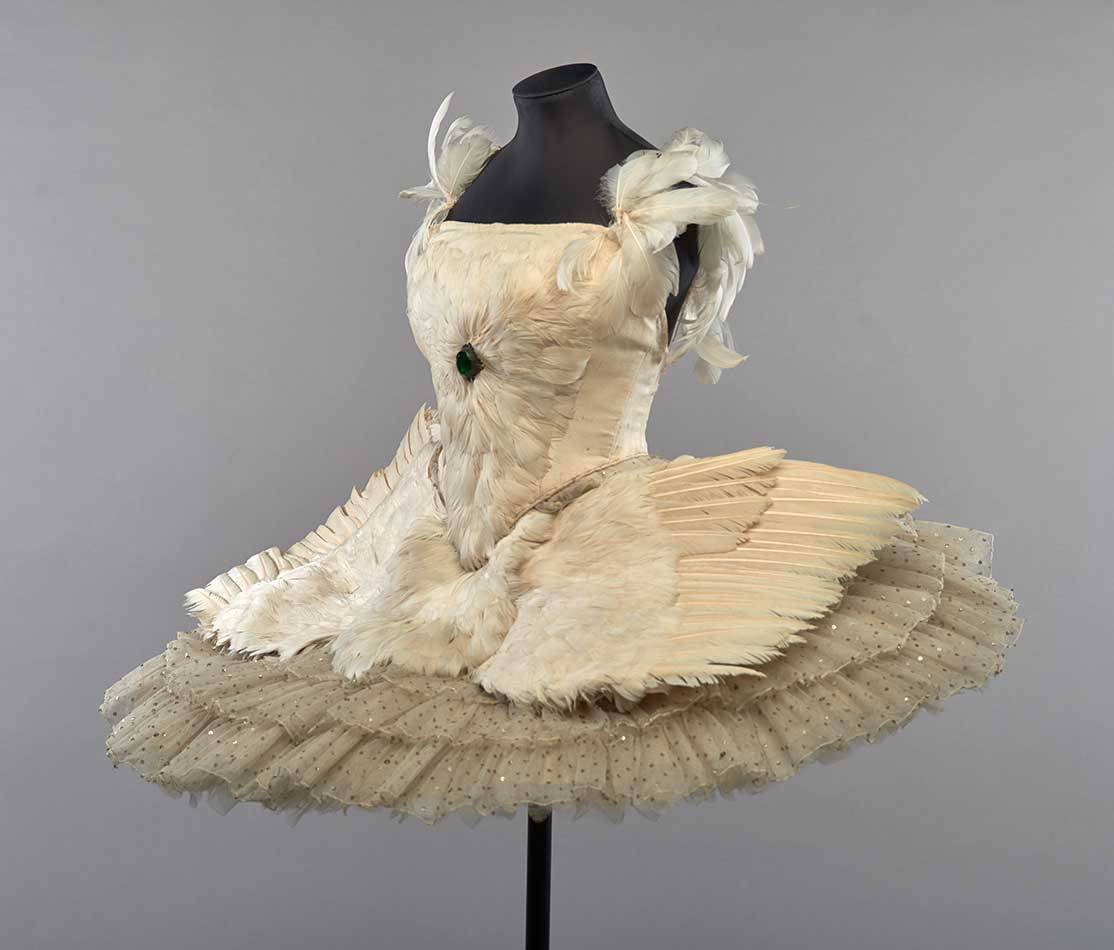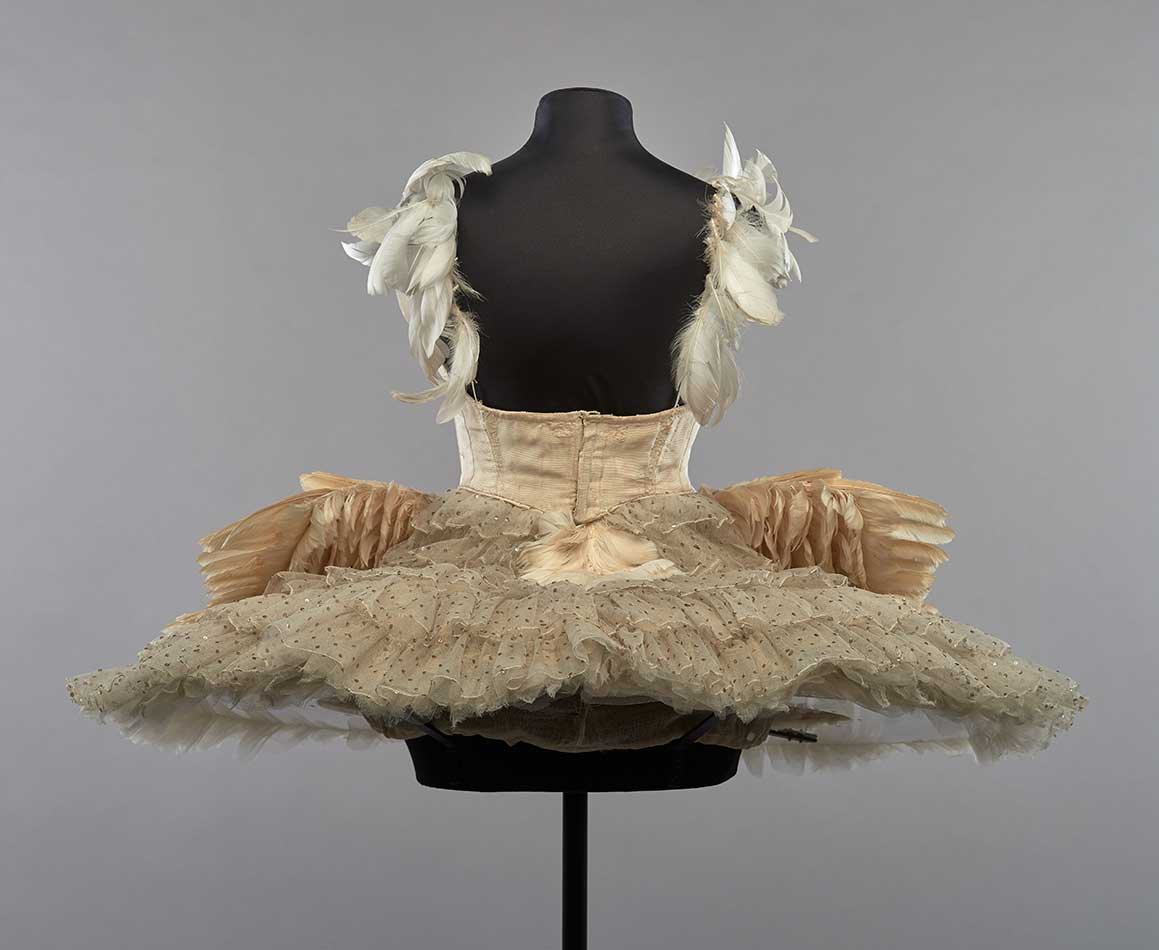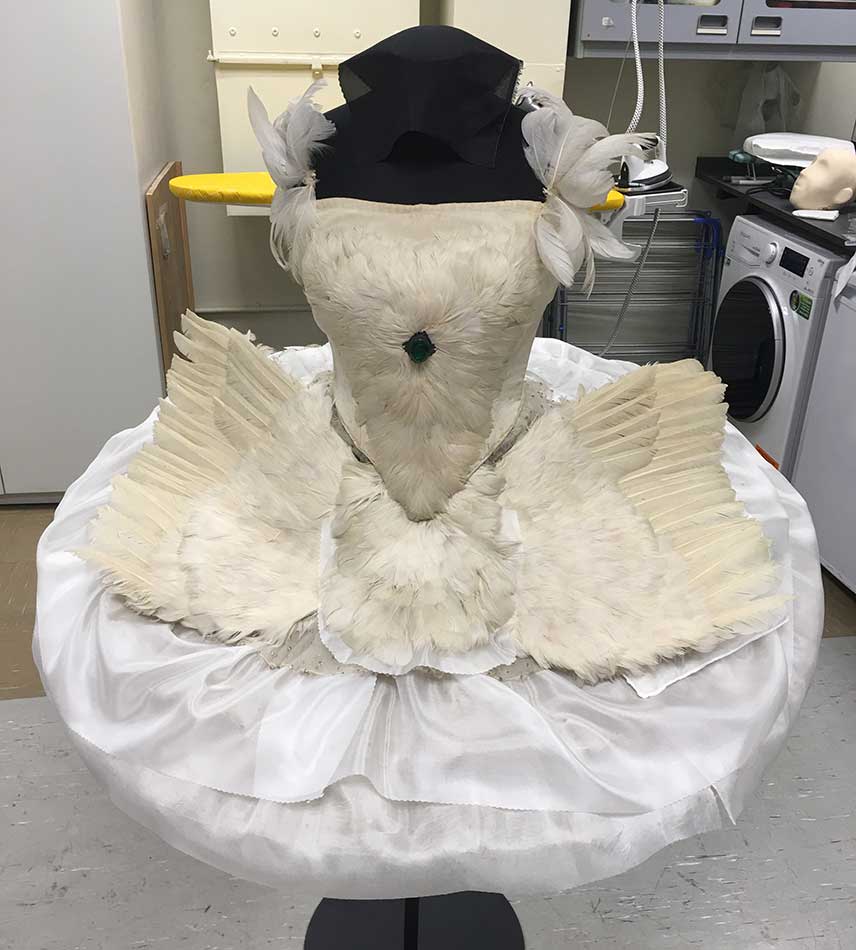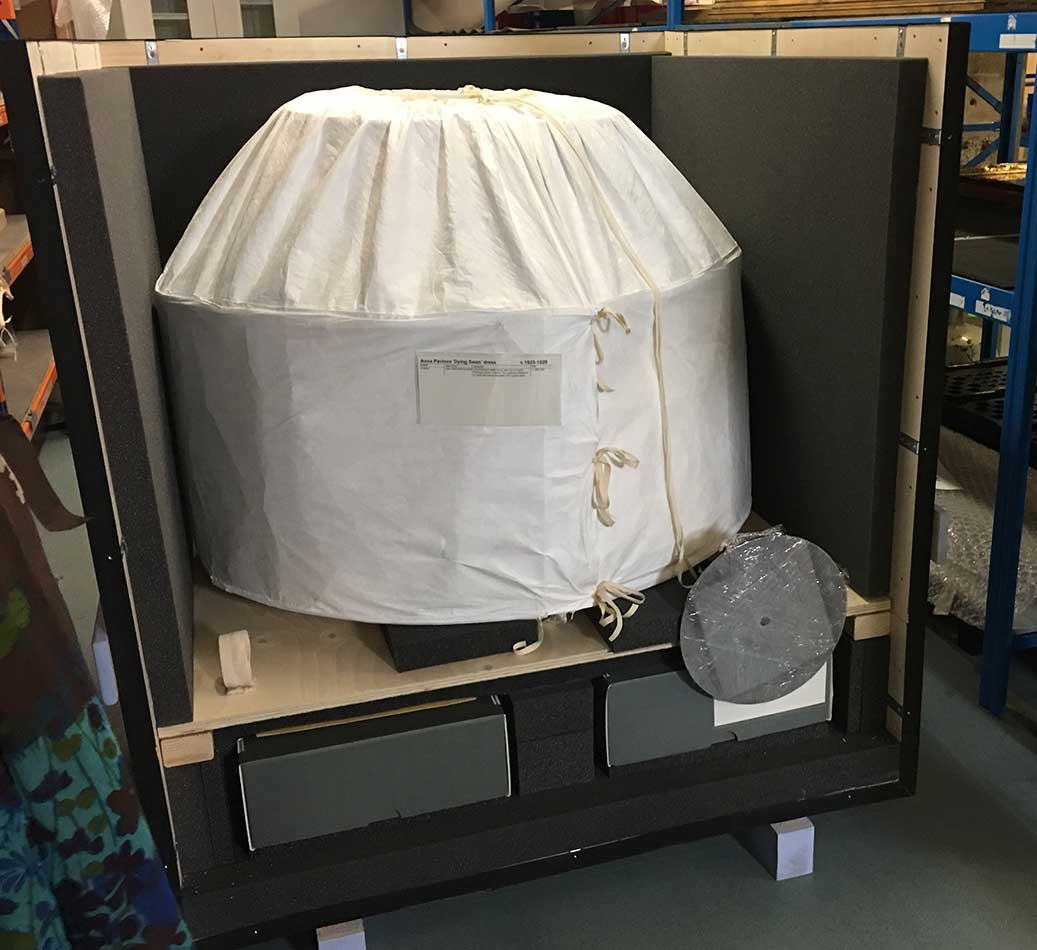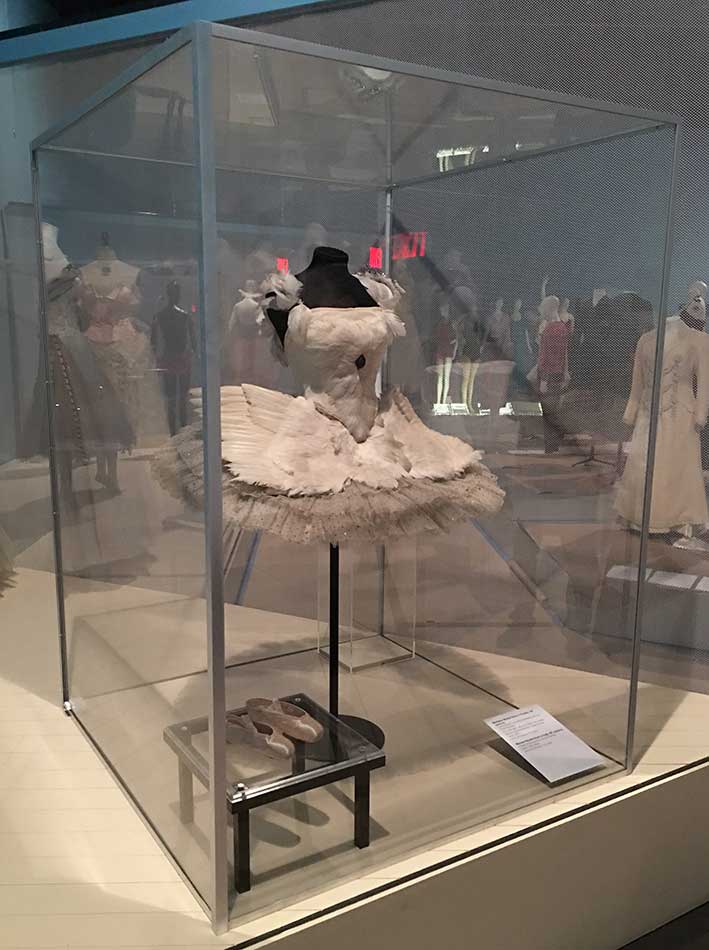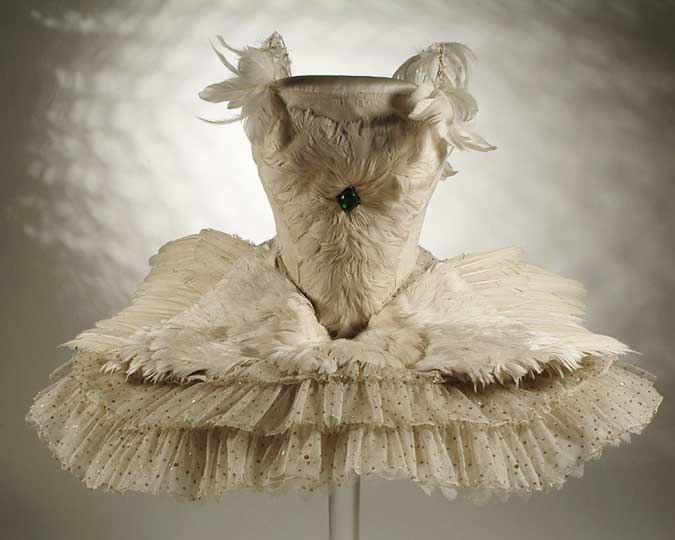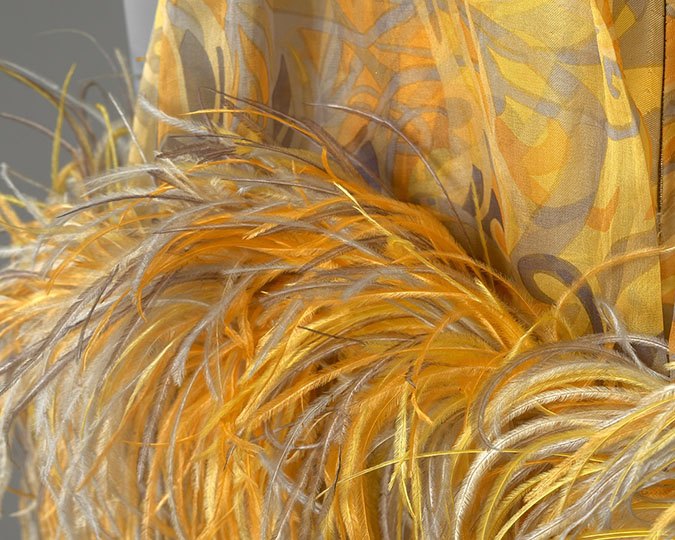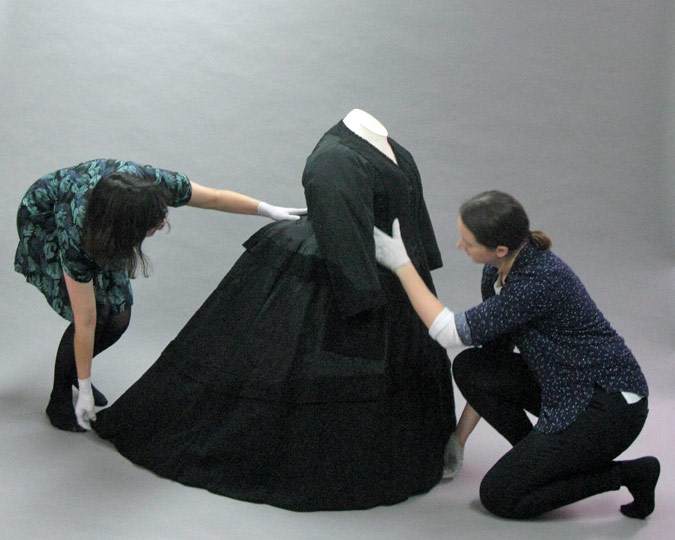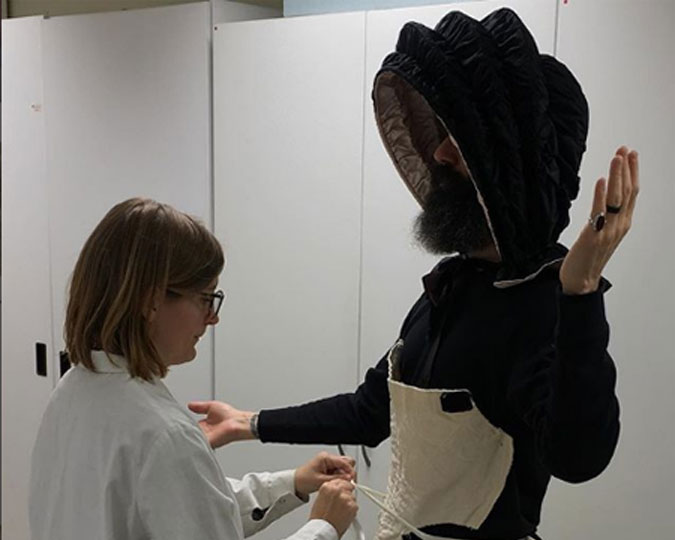In January 2020, Anna Pavlova’s Dying Swan costume was flown to New York for display at the Fashion Institute of Technology for their celebrated ‘Ballerina: Fashion’s Modern Muse’ exhibition*. The preparation for this journey started much earlier, in the Dress & Textile store at the Museum of London the previous year.
Anna Pavlova (1881-1931) was a world-renowned ballerina whose career took her from Russia around the globe, before making London her permanent home in 1912, while continuing to tour internationally. She famously kept her own swans on the grounds of her house in Golder's Green, North London. She is best known for her expressive and emotive style of dancing, as well as lending her name to the popular meringue based dessert.
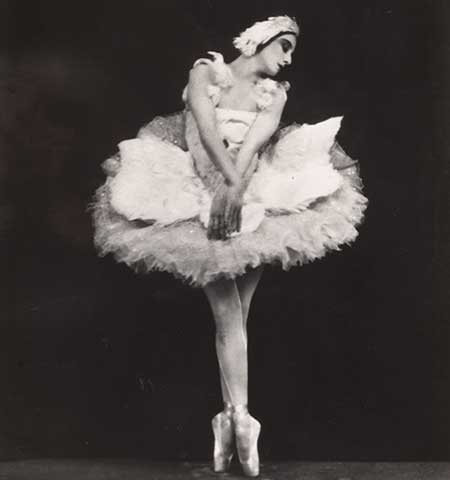
Anna Pavlova in costume from 'Le Cygne' (The Dying Swan)
The Dying Swan (originally The Swan) was one of Pavlova’s most famous pieces, usually performed as a solo dance. Although she is believed to have had many versions of the Dying Swan costume only three are known to have survived. One of which, thought to have been worn c.1910-1920, is in the Museum of London’s Dress & Textile collection.
The costume is in the style of a classical tutu with a boned bodice, silk tulle upper layers with gelatine sequins, and stiffened cotton under layers. The most striking feature is the use of real feathers: smaller sizes used on the bodice and shoulders, and larger feathers to recreate the ‘wings’ of the swan. The feathers are believed to be goose, but further analysis is needed to confirm this.
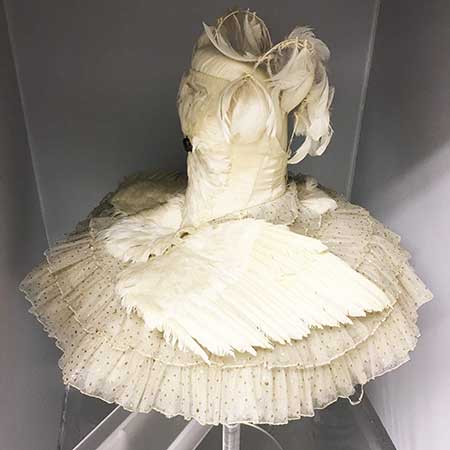
Tutu before conservation on its old storage mount.
The costume has been on display several times since it came to the museum in the 1930’s, most recently in 2003 for the Museum of London’s 1920’s exhibition. Since then, further deterioration of the silk tulle and the most vulnerable feathers meant it required conservation treatment before being stable enough to travel and go on display for several months. The dress had been stored on its display mount which after almost 20 years was no longer supporting the skirt layers.
One of the biggest concerns for feather objects within museum stores is the possibility of pests, such as moths or carpet beetle finding their way in and munching their way through the tasty protein fibres. Fortunately this costume is stored in a carefully monitored environment and the only evidence of pests were historic holes in some of the feathers, which did not affect their structural stability.
Cleaning and conserving
The complexity of materials and construction of this dress made it a challenge to conserve. It had to be treated on its mount so all the feather elements could be adequately supported while it was expected to be on the conservation bench for several weeks. A Tyvek tent was made to protect the dress from dust and light while it wasn’t being worked on, avoiding the need to rest a cover directly on the feathered areas.
The treatment began with surface cleaning the textile and feathers using a low suction vacuum and gently removing dust using a soft sable brush.
The silk tulle had multiple holes and tears to the outer frilled edge, these were supported using patches of colour-matched nylon net stitched into place with extra fine polyester thread. As well as creating a subtle support, this method allowed for a sympathetic infill and reduces the chance of further accidental abrasion causing damage.
The feathers had been spot cleaned during conservation treatment in the early 2000’s and following testing it was decided not to re-clean the feathers as it was unlikely to improve them to any significant degree to justify such treatment. The silk tulle, although yellowed, was also not spot cleaned due to the gelatine sequins dotted throughout which would dissolve in contact with water.
Instead, the feathers were humidified and realigned. An ultra-sonic humidifier which produces cold steam was used on the smaller softer feathers to gently introduce moisture while a wooden tool was used to mechanically realign each feather. For the larger, stiffer ‘wing’ feathers, muslin fabric was dampened and placed on the feather to introduce moisture slowly over a longer time, then individual barbs of the feathers which had become bent and distorted could be realigned.
The larger feathers which were broken and most vulnerable along the front edge were supported using very thin strips of Japanese tissue adhered using conservation grade adhesive to each broken barb. The aim of the conservation treatment was to stabilise the object in its current condition, not to return it to its condition when new, which is why no infills were added to the missing sections.
As a social history museum, the majority of conservation worked carried out at Museum of London is approached in this way in order to retain as much evidence as possible from the full lifespan of the object.
Mounting and packing for safe transit
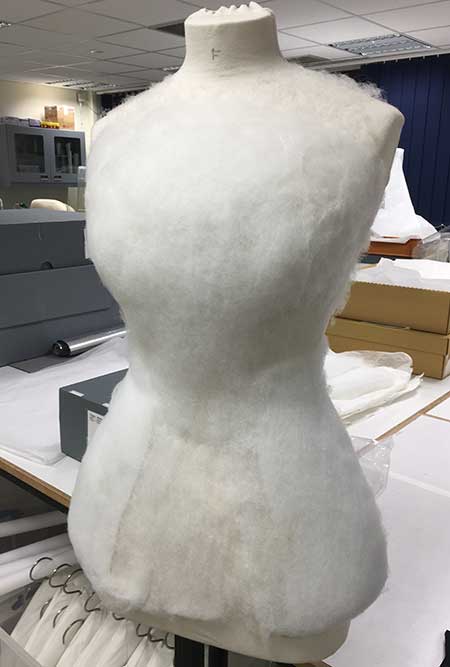
Polyester wadding was used to pad out the papier mache mannequin.
Following the treatment of the dress, a display mount which would double up as a travel mount was made. Working with the requirements of the lender and their overall exhibition design, a papier-mâché Stockman style mannequin was chosen. Polyester wadding and Fosshape were used to build up the mannequin where required, with an overall outer layer of cotton jersey to give a smooth finish. Black silk Habotai was used to cover any areas of the mannequin which would be visible on display.
The more challenging aspect of mounting this costume was creating a suitable support for the frilled skirt. Inside the skirt was an original metal hoop stitched between the layers of stiffened cotton, but this was not suitable to fully support the skirt long term. It needed a solid cushioned support to rest on. There is also a short muslin skirt underneath the frilled layers, which needed to be accommodated.
Working with our in-house technicians, a flat perspex ring was made and attached to the mannequin using angled brackets, to allow the skirt to sit above them.
When compared with images of Pavlova in similar costumes, the skirt sits raised at the back and slopes down at the front, therefore the angled perspex disc needed to reflect this. Gathered layers of nylon net were added to cushion the skirt and help add volume. Once on the mount, the feathered shoulder straps were held in place with stitches as the original elastic had failed and become loose and stretched over time.
Once the dress was mounted it was packed for air transit. Working with an external specialist art handling company, a crate was ordered large enough to house the dress along with a pair of shoes and tiara which were also being displayed.
Layers of silk Habotai and cushions were placed between the dress layers to reduce abrasion during travel. The feathers were still too fragile to have any significant weight placed on them, so a large Tyvek cover was made to protect and buffer the dress from outside elements without touching the delicate brittle feathers. Once inside the crate the mannequin was secured at its base and neck to prevent movement during transit and then it was sealed up.
On arrival at the Fashion Institute of Technology, the dress was unpacked and as it was already on its mount, placed into its display case alongside the accessories. Due to Covid-19 the exhibition was unfortunately cut short, but the dress was able to make its way back to Museum of London during the summer when restrictions had been eased. Now that the dress is fully conserved we hope it will go on display again at Fashion Institute of Technology, but until then it is safely housed back in the museum stores.
* ‘Ballerina: Fashion’s Modern Muse’ exhibition: https://www.fitnyc.edu/museum/exhibitions/ballerina.php








